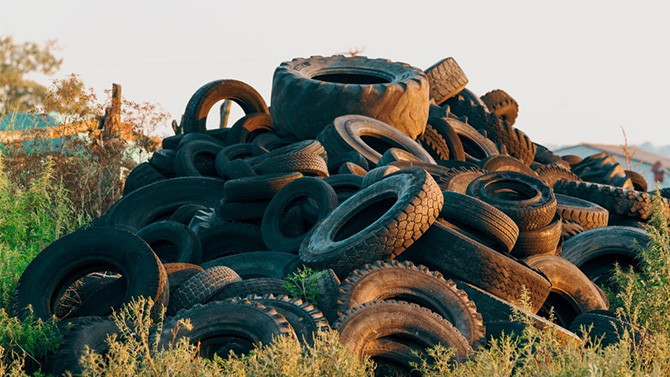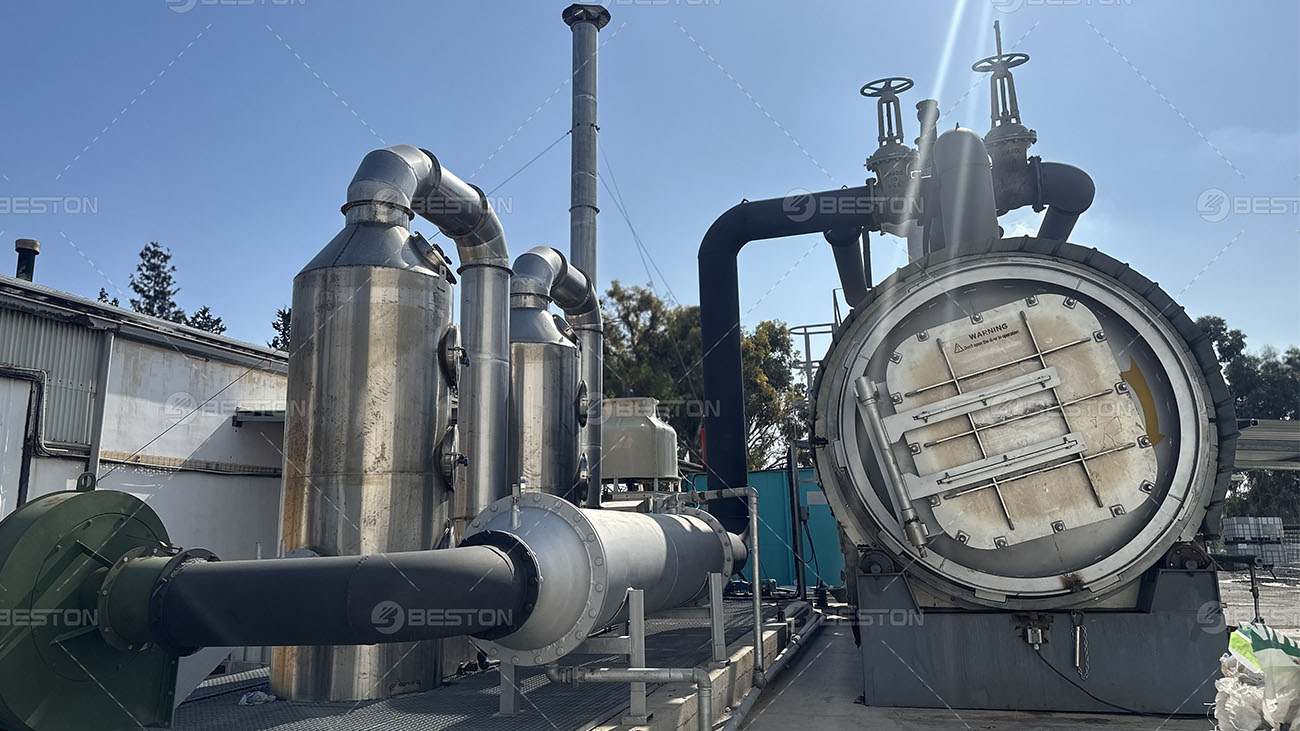Introduction
Definition of Pyrolysis: Pyrolysis, at its core, is the thermal decomposition of organic materials in the absence of oxygen. In the realm of tyre recycling, it stands as a revolutionary process capable of turning discarded rubber into useful byproducts.
Significance of Tyre Recycling: The significance of tyre recycling cannot be overstated. With the global automotive industry witnessing exponential growth, the disposal of scrap tyres has become a pressing environmental concern. The need for sustainable solutions is paramount.
The Growing Challenge of Scrap Tyre Disposal: As landfills teem with discarded tyres, the challenge of effective disposal grows. Traditional methods fall short, underscoring the urgency for innovative approaches like pyrolysis.

The Pyrolysis Process Unveiled
Thermal Decomposition Mechanism: Pyrolysis initiates a chemical transformation through controlled heating in the pyrolysis machine. The rubber undergoes thermal decomposition, breaking down into valuable byproducts without the release of harmful emissions.
Temperature and Pressure Variables: Fine-tuning the temperature and pressure parameters is critical in optimizing the pyrolysis process. This meticulous control ensures the efficiency of tyre conversion while minimizing energy input.
Yielding Valuable Byproducts: The pyrolysis of tyres yields a spectrum of valuable byproducts, including liquid fuels, carbon black, and recovered steel wire. Each holds its own in contributing to a sustainable, circular economy.
Tyre Waste Woes: An Environmental Hazard
Exploring the Impact of Scrap Tyre Pollution: Scrap tyre pollution poses multifaceted environmental risks. From leaching toxic compounds into the soil to acting as breeding grounds for disease vectors, the repercussions are far-reaching.
Landfill Issues and Long-Term Consequences: The sheer volume of tyres in landfills contributes to spatial challenges and long-term environmental consequences. The slow decomposition of rubber exacerbates the issue, necessitating proactive solutions.
Urgency for Sustainable Solutions: In light of the environmental hazards posed by scrap tyres, the urgency for sustainable solutions, such as pyrolysis, becomes clear. This eco-friendly approach addresses the disposal challenge while harnessing valuable resources. If scrap tyres need to be processed on a large scale, continuous tyre pyrolysis plant has become an emerging option.

The Role of Pyrolysis Plants
Engineering Innovations in Pyrolysis Technology: Pyrolysis plants showcase cutting-edge engineering innovations. Automated systems, real-time monitoring, and advanced control mechanisms ensure the efficiency and safety of the tyre-to-resource conversion process.
Operational Workflow of a Tyre Pyrolysis Plant: The operational workflow of a tyre pyrolysis plant involves shredding the tyres, feeding the shredded material into the pyrolysis reactor, and collecting the resultant byproducts. This streamlined process maximizes resource extraction.
Environmental Benefits of Pyrolysis: Beyond resource recovery, pyrolysis stands out for its environmental benefits. Preventing the release of harmful emissions associated with traditional incineration, it aligns with global efforts to mitigate climate change.
Byproducts and Their Versatile Applications
Liquid Fuels: A Sustainable Energy Source: The liquid fuels derived from tyre pyrolysis find application as sustainable energy sources. With properties akin to diesel, these fuels contribute to the reduction of fossil fuel dependence.
Carbon Black: Industrial Applications: Pyrolysis produces high-quality carbon black with diverse industrial applications, from rubber manufacturing to ink production. This versatile byproduct breathes new life into materials.
Steel Wire Recovery and Recycling: The recovery of steel wire from tyres during pyrolysis adds another layer of sustainability. This recovered steel finds its way back into manufacturing processes, closing the loop in tyre production.
Challenges and Future Prospects
Technological Hurdles in Large-Scale Implementation: While pyrolysis shows promise, technological hurdles persist in scaling up operations. Addressing these challenges is crucial for realizing the full potential of tyre recycling through pyrolysis.
Economic Viability and Market Dynamics: The economic viability of pyrolysis hinges on market dynamics and regulatory frameworks. As the demand for sustainable practices grows, aligning economic incentives with environmental goals becomes imperative. If you are looking for a professional tire treatment solution provider, you can contact Beston Group Co., Ltd.
Research and Development Initiatives: Ongoing research and development initiatives aim to overcome current limitations and push the boundaries of pyrolysis technology. Collaborative efforts between academia, industry, and government entities drive innovation forward.
In conclusion, the transformative power of pyrolysis in tyre recycling presents a beacon of hope in our quest for sustainable waste management. As technology advances and awareness grows, the trajectory from trash to treasure becomes not just a possibility but a tangible reality, shaping a cleaner and greener future.